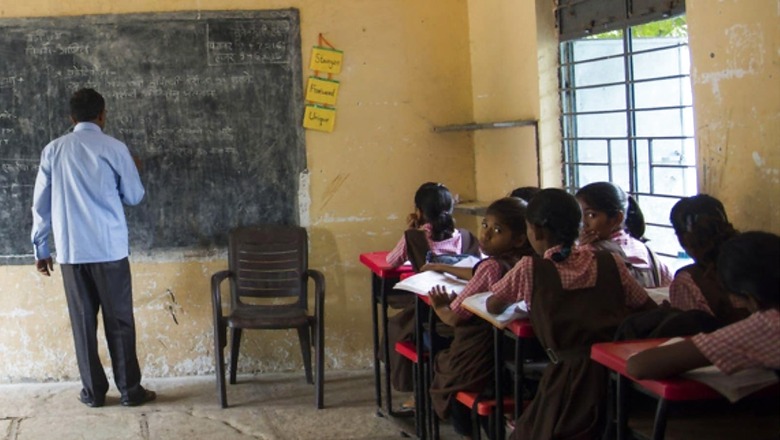
views
India’s New Education Policy (NEP) 2020 focused heavily on one of the country’s neglected aspects of learning: the student-teacher ratio. Filling vacancies and ensuring that there is a healthy balance in the number of pupils each teacher has to instruct was one of the priorities. Yet, after several years, the pupil-teacher ratio remains abysmally low in the entire country. The nation has nearly 1.2 lakh schools run by a single teacher, according to a report by a leading news daily. This is 8 per cent of all Indian schools.
The number hints towards a single teacher being burdened with a heavy workload due to the high number of students. In contrast to the ground reality, the Right to Education Act (RTE) 2009 requires a student-to-teacher ratio of 30:1. If we have 70 students, there will be a need for 3 teachers. Primary schools are the worst affected by this low count.
Also read| Counselling Students with Low Grade, Reducing Curriculum Load: IITs Step Up Measures to Check Suicides
Among states that perform poorly in this regard, those with high population density feature prominently. Uttar Pradesh and Bihar, two of the populous states, faced with extreme poverty, perform very poorly on the pupil-teacher ratio indicator. However, states with smaller populations perform fairly well on the student-teacher ratio. Among the larger, more populous states of the country, Kerala has the lowest number of single-teacher schools.
The student-teacher ratio is considered important because it directly relates to the effectiveness of teachers, and therefore, the quality of learning. Students’ performance and success depend on how well teachers are able to focus on them. The average number of students per teacher shows the burden of work on teachers. Schools with smaller student-teacher ratios allow educators more time to spend with each student. They can check the progress of every student they are responsible for and provide more individualised teaching.
In India, the availability of teachers is not the only issue. Schools in the country also lag behind in the digital push, which was aimed at making the internet available to students throughout the country. Despite increasing budget allocations to the Ministry of Education in recent years, these issues have continued to persist.
Read all the Latest Education News here




















Comments
0 comment